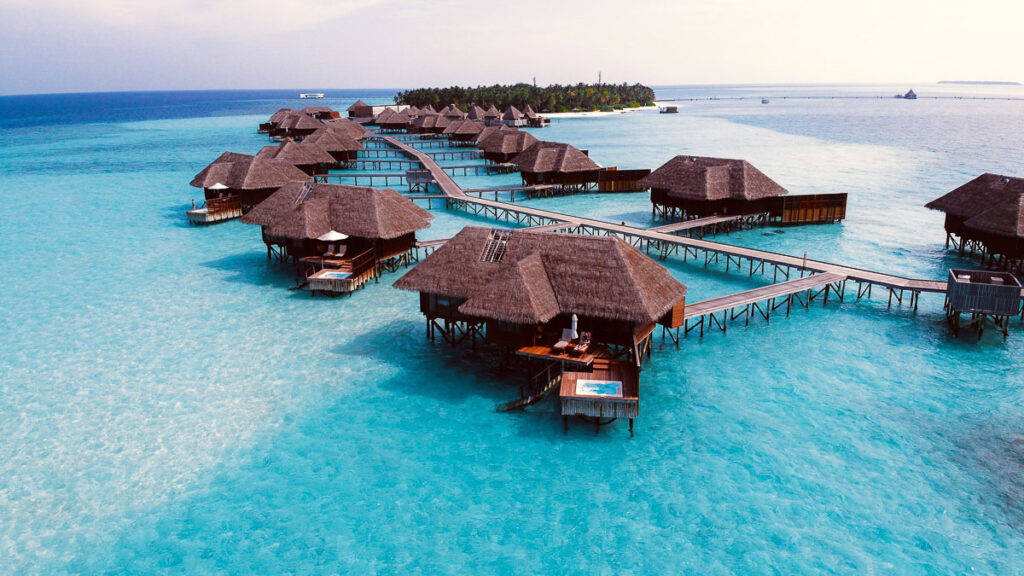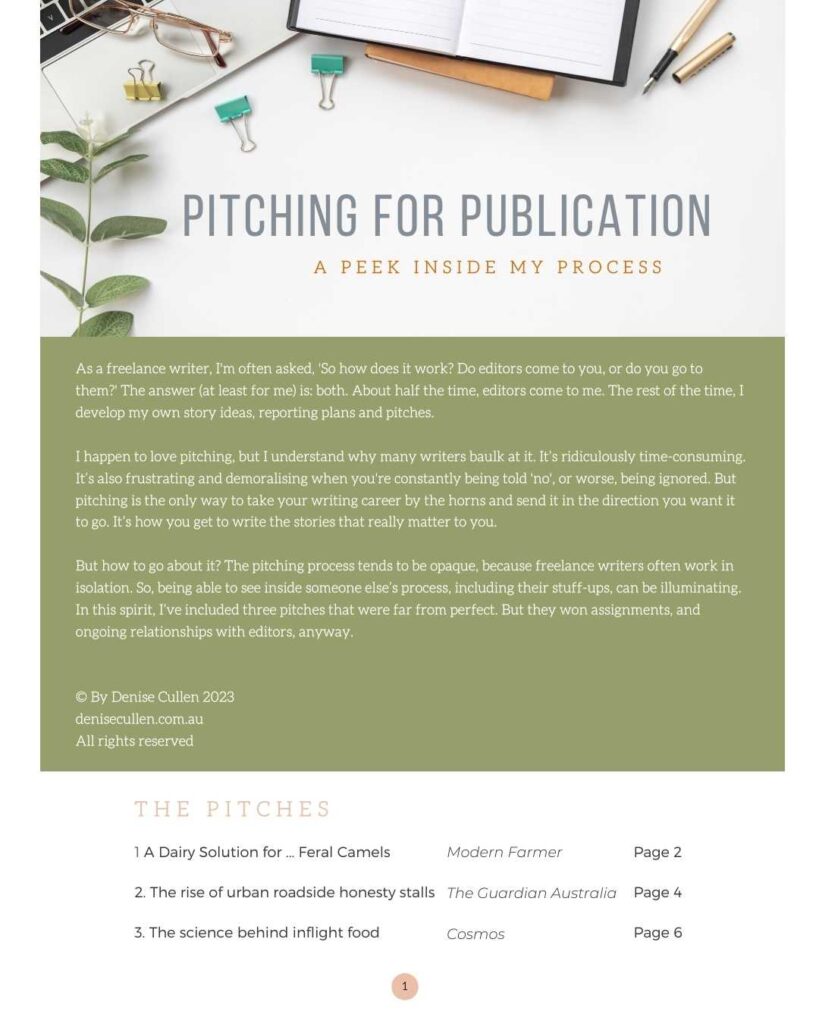When I mention that I’m a freelance travel writer, I’m usually met with one of two responses:
‘That’s not a real job.’ (Husband)
‘That’s my dream job.’ (Everyone else)
For many people, freelance travel writing holds immense appeal. There’s the opportunity to explore new places, share your stories, and make a living (sort of) while doing so.
And while sunbathing on a private island, downing caviar and champagne at the pointy end of the plane, and penning stories from the hotel pool might sound dreamy (and, admittedly, not much like a real job), the reality is somewhat different.
The reality involves a few secrets that few people discuss openly. Until now.
Are you someone who wants to break into this competitive field? Know that it requires more than a passport, a notebook, and a sense of wanderlust.
You’ll also need strategy, persistence, resilience, a liberal dash of luck, and a healthy appreciation of the downsides.
Here are 13 truths and 1 lie about being a travel writer which will either shift your perspective or prepare you for the journey ahead:
- Not all travel is luxury travel
- Sometimes you don't go anywhere at all
- You travel to romantic places … alone
- Group famils can be exhausting
- You don't always fly business class
- You might have to foot the bill at first
- You'll have to pay for stuff, even on a sponsored trip
- Sometimes you'll go hungry
- Staying healthy on the road is a challenge
- There's no such thing as a free lunch
- Prepare to be disappointed, rejected and ignored
- You need to do everything and then some
- You'll often get paid months down the track
- You'll make a fortune freelance travel writing
Not all travel is luxury travel
Though I’ve stayed in my fair share of luxury properties, it’s not all overwater villas in Bora Bora or upscale safari lodges in Tanzania. I’ve spent a week rough camping with no running water (or flushing toilets), and nights huddled under a glamping tent that threatened to blow away during a storm. I’ve also slept in a hotel room which had such a strong smell of disinfectant with undernotes of a butcher’s shop that it suggested a crime scene clean-up. The irony is that sometimes these experiences lead to richer (or, at the very least, more entertaining) stories.
Sometimes you don’t go anywhere at all
I like a far-flung, exotic destination as much as the next travel writer. Despite this, many of my assignments involve covering places close to home. I could pretend that concerns about the environmental sustainability of long-haul travel were driving such restraint, but the truth is that a one-hour tootle down the M1 is a lot less tiring than a round-the-world plane journey.
About 50 per cent of the travel stories I write are based in Queensland – particularly my original hometown (Gold Coast) and my current hometown (Brisbane). Living in a place grants you instant authority. You’re well-positioned to provide an historical perspective, explain the nuances of local culture, and spot new openings of hotels, restaurants, tours, and more.
For these reasons and more, many editors are often keen to work with writers who write about where they live. Read more about why your backyard is the best place to launch your travel writing career.
You travel to romantic places … alone
Picture footsteps on powdery white sands, gentle salt-laced breezes, bottomless cocktails at sunset, seafood banquets on the beach. In a week, I’m heading off on an individual famil (familiarisation tour) to the romantic Maldives, the destination of choice for lovers, elopers, and newlyweds … and I’ll be there all alone.
Hosts aren’t averse to you taking along a plus-one, but you’ll often need to foot the bill for their airfares, transfers, food, and other out-of-pocket expenses. Such costs typically far exceed the amount you’ll earn from the stories you’re there to write, making it a non-viable proposition most of the time. Hence, partners get left at home – where they end up viewing Instagram posts of you sipping cocktails, eating seafood, having spa treatments, and swimming with whale sharks. All of this lends support to their pre-existing ‘That’s not a real job’ thesis.
In addition, while I’m completely comfortable dining, exploring, and relaxing on my own, your lack of a companion will sometimes attract unwanted attention. ‘Oh no!’ a male diner recently exclaimed, when he overheard me telling the waiter that I wasn’t expecting anyone else. ‘Then I will sit with you.’ He then plopped himself down on the banquette seating opposite, expecting me to be thrilled, and only effed off when I told him he was blocking my water view.

Group famils can be exhausting
Travelling with a group of other writers on a press trip can be tremendous fun. You’re on an adventure amid a group of people who are all (presumably) just as passionate about travel, writing and photography as you are. And someone else (usually a PR representative) is keeping things on track and on budget. But if you’re anything like me, the fast and furious pace of the typical group famil can leave you overstimulated and craving a lie-down.
Early starts, late nights, and an action-packed daily program provides little room to reflect or relax. Usually, the only time you spend in your $5000-a-night suite with the eggshell bath, infinity edge pool, and helical staircase to a loft with a lookout, is when you’re unconscious.
You don’t always fly business class
I’ve only ever flown business class on travel writing assignments, but such sweet gigs are few and far between. Often, you’ll find yourself wedged into economy, travelling on the cheapest red-eye fares, and cooling your heels in airports waiting for the next connection because a trip involving several stops is a more affordable option for the host.
The few business class trips I’ve taken have completely ruined me, by the way. Now, I upgrade using points whenever I possibly can.
You might have to foot the bill at first
Press trips and sponsored travel are the dream. But, in the beginning, you’ll probably have to pay for trips out of your own pocket. This is why writing about destinations close to home can propel you further, faster, especially when you’re trying to get established. Travelling locally cuts costs like flights and visas, allowing you to allocate budget towards other aspects of your craft, such as writing classes, a drone, or a new camera lens.
Opportunities for free travel usually only come after you’ve built a portfolio, maintained a regular pitching regime, and established a rock solid reputation. Even then, press trips are no holiday. As I mentioned earlier, there’s a lot of hard work involved – participating in activities, identifying story angles, conducting interviews, capturing footage, posting to social media, taking notes, and networking.
Some travel bloggers such as Jessie on a Journey argue that travel creators should be compensated for the time they spend on the road because this is, in fact, a real job, and travel takes you away from other income-earning opportunities. That’s a valid argument. When I’m on an extended trip, my forensic psychology practice (which, financially, keeps the lights on) is put on hold. Yet the reality is that no-one is typically covering the opportunity costs associated with your travel. Arguably, you could write on the road, but in my experience, time restrictions make it difficult to do so. Writing multiple stories is one way to wring out the maximum value from the time and money you spend on each trip.

You’ll have to pay for stuff, even on a sponsored trip
Even if your host covers the main aspects of a trip, such as airfares, hotel stays, and food, you’ll be surprised at the incidentals which crop along the way. These include airport transfers, tips, fuel, alcohol, sunscreen, a hat to replace the one that blew off on the boat, and an umbrella to replace the one you left in the cafe three towns back. While I’m pretty sure staff writers can charge at least some of these back to their publication, freelance writers tend to end up footing these bills themselves.
Pre-trip preparations can also cost you. Earlier this year, in preparation for a trip to Qatar, I visited the doctor for the recommended vaccinations and advice ($90, less Medicare rebate), and the chemist for just-in-case antibiotics ($26.19). I also purchased travel insurance ($157.32) and paid an additional fee ($361.40) to move up to the preferred seating within economy class. The latter cost, although it felt like an indulgence at the time, was totally worth it. On the return trip, I had a row of three seats to myself which meant I slept my way through a significant part of the nearly 16-hour journey. But it was a still a big chunk out of the fees I earned from the various stories that eventuated.
Whinging about these additional costs is futile though. Accept them as a fact of life. Be prepared. Ensuring you have a line of credit available can help avoid surprises and smooth the path ahead. If you’ve just missed a connecting flight, or you can’t face another hour of cross-country driving, it’s such a relief to hand over a credit card so you have somewhere safe to sleep.
Sometimes you’ll go hungry
It’s increasingly common for travel writers to receive itineraries which cover the costs of some, but not all, meals. If you’re travelling to a location which has supermarkets or affordable (and safe) street food, this isn’t a big deal. However, when you’re staying in a gated five-star resort, suddenly staring down the barrel of a $100 bill for a Club Sandwich and a can of Diet Coke, then it starts to rankle.
I’ve also noticed a trend among cash-strapped tourist boards in which they specify you dine at a particular restaurant that is a central part of the proposed story, but then drop the ominous line, ‘dinner at own expense’. My firm policy in such cases is to first have a ‘Let’s be reasonable’ conversation with the host. If that fails, I decline to dine at – or write about – that restaurant.
(Planning to go off-piste to satisfy your own curiosity or chase a different angle? That’s different. In that case, the meal is on your dime.)
Such machinations can leave you with holes in your itinerary – and serious hunger pangs. For that reason, I always travel with a survival kit containing Bounce protein balls, Hart & Soul cup soups, Carman’s Kitchen Muesli Bars, and Ito En hojicha teabags (These are NOT affiliate links, they’re just products that I love). These all fit in a single lunchbox and will see me through most situations, so long as my accommodation has a kettle.
Staying healthy on the road is a challenge
You’re tired, jetlagged, and out of your usual routine. You’re either eating rich foods or living off packet soup (see previous point). Throw in some dehydration from the long-haul plane trip, some blisters from your new boots, a handful of dodgy water sources, a sunburnt bottom (caused by your togs riding up while snorkelling – yes, really), a few malaria-ridden mosquitoes, and a rabid dog or monkey, and you have the perfect recipe for poor health on the road.
You can get all the recommended vaccinations and follow all the guidelines about washing hands, drinking bottled water, wearing masks, avoiding contaminated foods, and so on, but it’s not uncommon to become unwell on the road. And when you’re in constant forward motion, there’s little opportunity to rest and recover. If you’re travelling on a group press trip? Illness becomes a very, very, public event.
Two years ago, on a rocky boat ride out to a volcanic island off Fingal Head, I became seasick for the first (and, so far, the only) time in my life. I managed to hold it together long enough to snorkel with turtles, which was the whole point of the excursion, but as soon as I climbed back onboard the boat, I began throwing up violently over the side. ‘Oh, look!’ another of the other writers exclaimed. ‘You’re feeding the fish!’ Horrified, I saw that the contents of my stomach had sparked a feeding frenzy in the water – a scene which still haunts my nightmares.

There’s no such thing as a free lunch
When you’ve just stepped off a superyacht to be wined and dined on an unspoilt strip of sand that will disappear within a few short hours, it’s not because you’re special. It’s because you have an audience your host wishes to reach. The expectation is that you’ll write compelling content about the experience, which typically involves significant time, effort, and expense. And often, this will all need to happen within tight timeframes and with minimal support.
Sometimes, too, there are not-so-subtle pressure to promote a product or destination in a way that aligns with the host’s objectives. ‘Please include messaging supporting our upcoming campaign,’ was the directive one PR gave me recently. Always resist such implied or actual pressure, where you can, and remember that when you’re getting something for ‘free’, there are always strings attached.
Prepare to be disappointed, rejected and ignored
Except for the most elite echelon of freelance travel writers – and I’m not one of them – there’s an imperative to keep pitching, hustling, and networking, to keep the assignments rolling in. The time you invest in these activities can be considerable. And it’s all unpaid labour. (You can increase the odds of success by following these tried-and-tested psychological principles when you pitch.)
This pressure-cooker situation can be highly stressful, especially when travel writing is your sole source of income. This is one reason I maintain multiple sources of income. Expecting my next travel writing gig to keep me solvent has sent me a little crazy in the past.
Even if you’re well-established, and even if you have great ideas, editors often say ‘no’ for all sorts of reasons, so you need to be resilient, persistent, and able to shrug off every rejection with the call of, ‘Next!’. Read more about secrets to coping with rejection as a writer.
You need to do everything and then some
When I started out as a travel writer, it was enough to just put the words together. That’s a big task in itself. (Want to prewrite your way to a faster first draft? Read this.)
Today, you still need to put the words together, but also to juggle multiple additional roles – as a photographer, videographer, social media manager, archivist, marketer, travel agent, and SEO specialist. Wearing several hats gets tiring after awhile.
You’ll often get paid months down the track
Although you’re usually expected to turn work around pronto, this need for speed does not extend to the accounts department. The Media Entertainment and Arts Alliance is campaigning for better rates and terms for freelance writers and some publishers have already shifted to fairer policies around payment on acceptance (rather than on publication). But sometimes you’ll still need to wait until your work is published before you even get the purchase order that lets you submit your invoice. The longest I’ve waited to be paid for a completed story is 18 months post-submission, but I know writers who’ve waited two years or more. This creates enormous financial stress. Publishers, please stop it.
To read more about freelance writing’s hard truths and horror stories, visit Halloween reading for writers.
You’ll make a fortune freelance travel writing
Remember how I said there were 13 truths and one lie? This is the lie. You won’t make a fortune freelance travel writing. You won’t even make minimum wage. According to Glassdoor, the estimated salary for an Australian travel writer is $20,034 per year. So why would anyone choose this path of penury?
The answer lies in the rich experiences you gain along the way. This work has taken me to countries that were never on my radar, put me in touch with people who have inspired me, and allowed me to stay in places I could never otherwise afford.
So, despite the financial risks, the unpaid hours, and all the other downsides, it’s still worth it. To me. For now. How about you?
Over to you. Did I miss any of the pros and cons? Let me know in the comments!
While you’re here. I invite you to subscribe to my newsletter. You’ll receive writing tips every fortnight, breaking news on courses currently under development, and a FREE copy of Pitching for Publication, which deconstructs three successful pitches to Australian and international editors.

